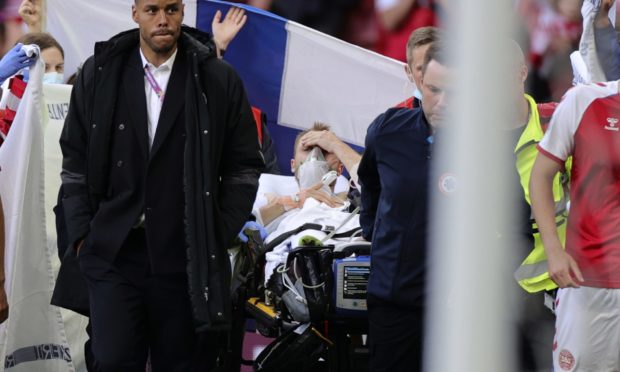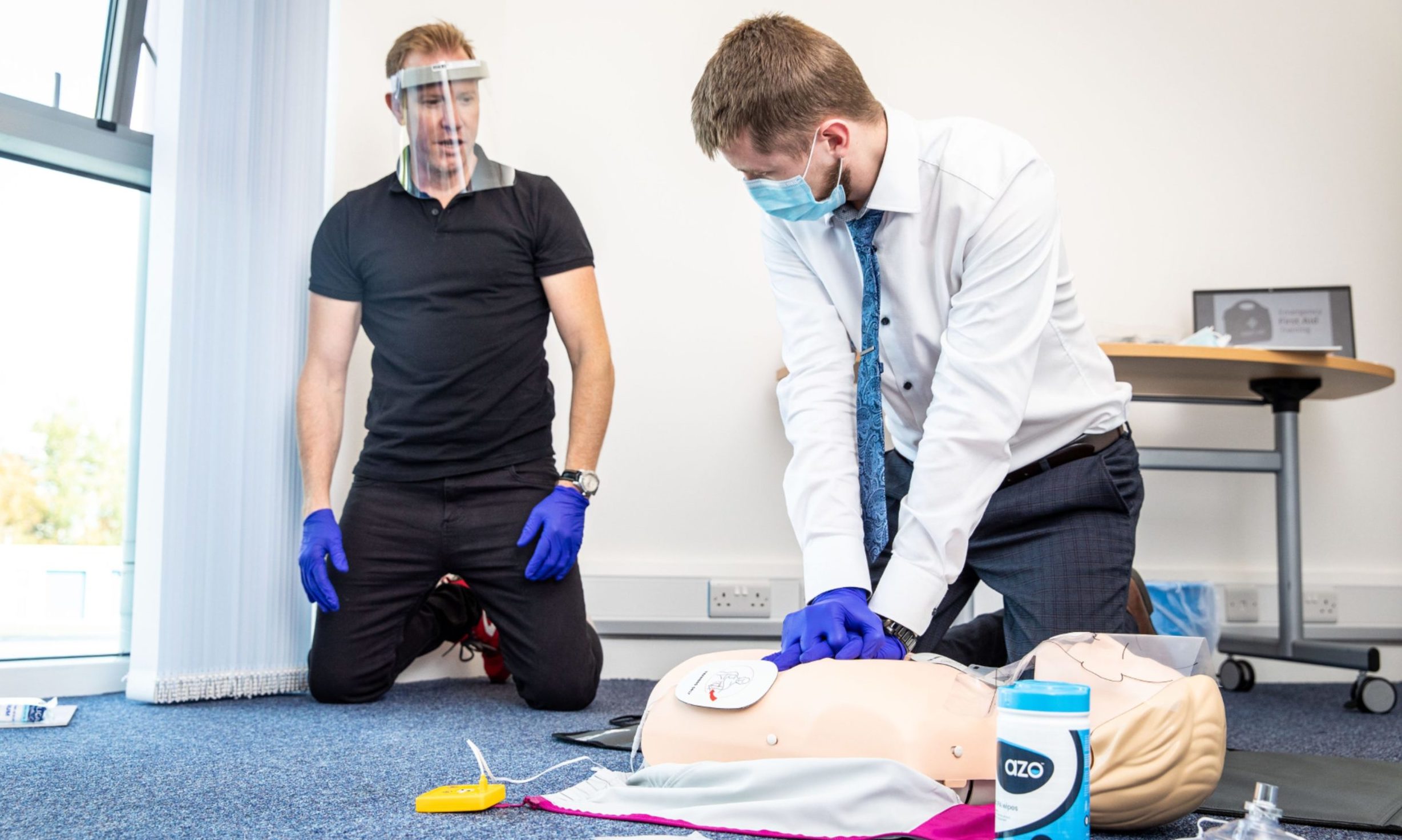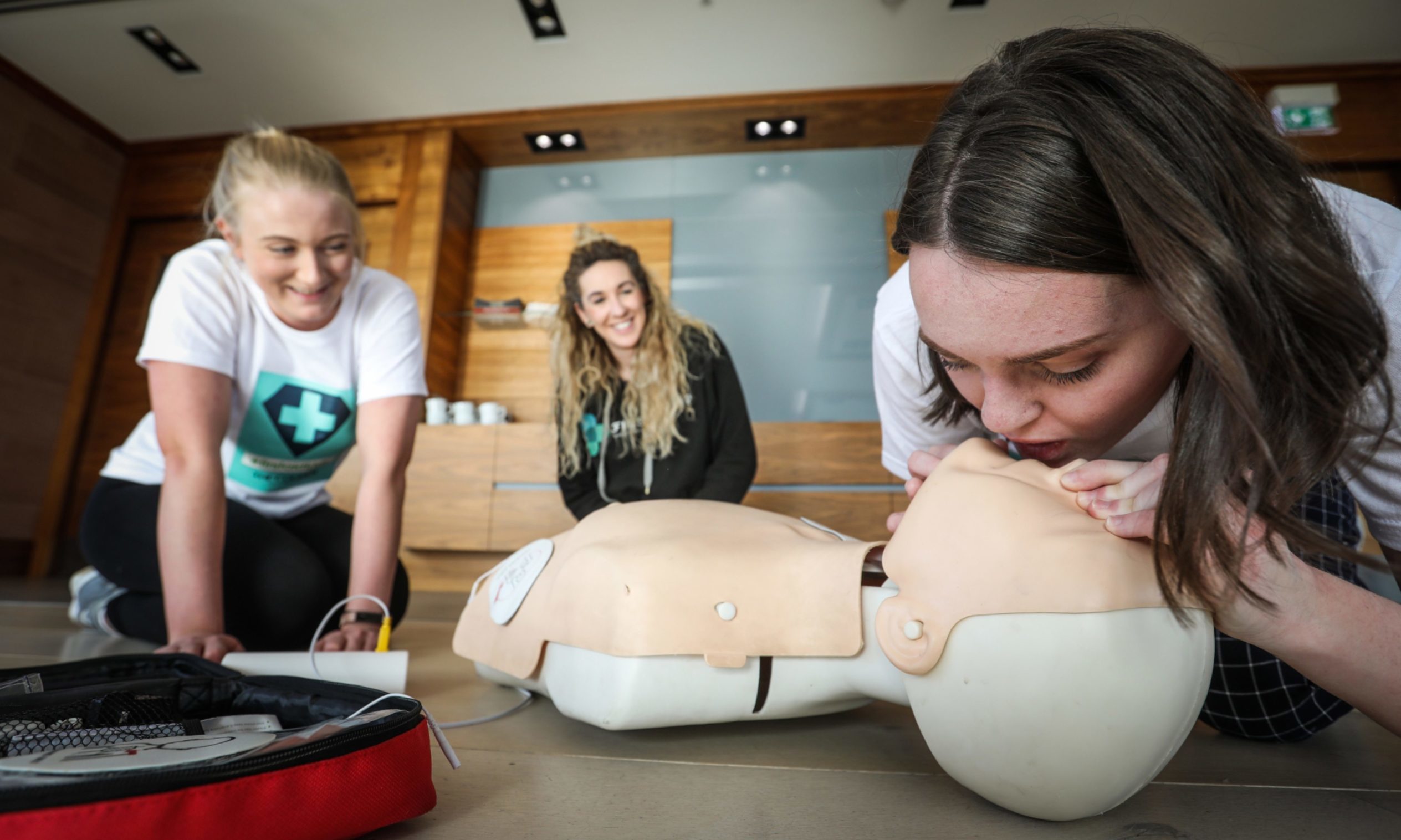Denmark’s team doctor has confirmed Christian Eriksen suffered a cardiac arrest on the pitch – but what does that mean, and what can you do to help save a life?
The 29-year-old midfielder collapsed during his country’s opening Euro 2020 clash with Finland on Saturday, with medics immediately tending to his needs.
This included a mix of CPR – cardiopulmonary resuscitation, when you repeatedly press on the patient’s chest – and a shock from a defibrillator.
Team doctor Morten Boesen said: “He was gone. We did cardiac resuscitation, it was a cardiac arrest.
“How close were we to losing him? I don’t know, but we got him back after one defib, so that’s quite fast.”
What is a cardiac arrest?
While the two terms are often used interchangeably, a cardiac arrest and a heart attack are different conditions.
A heart attack occurs when the blood supply to the heart is restricted, usually by a blood clot, but tends to keep beating.
This can then lead to a cardiac arrest, however, which is when the heart develops an “unnatural rhythm” and stops pumping blood around the body altogether.
This starves the brain of oxygen, causing someone to fall unconscious and stop breathing.
It is described by medics as “clinical death” – but can be treated with urgent action.
Around 30,000 people suffer out-of-hospital cardiac arrests in the UK every year – with nine in 10 people dying from them.
However, early intervention – using CPR and a defibrillator – can double someone’s chances of survival.
How do I know if someone is in cardiac arrest?
Generally the signs of a cardiac arrest are immediate.
These include:
- Sudden collapse
- No pulse
- No breathing, or breathing irregularly
- Loss of consciousness
Sometimes patients will show some signs in the minutes beforehand, including chest discomfort or heart palpitations, a shortness of breath and a general feeling of weakness.
Resuscitation Council UK says you should shout at the patient, then either gently shake or tap their shoulders to check for a response.
You should also monitor their breathing. This can be done by seeing if their chest is rising and falling.
During the coronavirus pandemic, it is not recommended that people place their ear or cheek near the person’s face, and place a cloth or towel over their nose and mouth.
How to treat a cardiac arrest
If you come across someone in cardiac arrest, The British Heart Foundation says you should call 999, start CPR then ask someone to bring a nearby defibrillator, if there is one nearby.
CPR involves pressing on the person’s chest to help blood circulation, and sometimes includes artificial ventilation, or rescue breaths.
The NHS offers five instructions for administering this – but first responders will also be guided through the process by a 999 call handler.
- Place the heel of your hand on their breastbone, in the centre of their chest, then place your other hand on top and interlock your fingers.
- Reposition yourself so your shoulders are above your hands.
- Using your whole body weight, press straight down 2 to 2.5 inches (5-6cm).
- Keeping your hands on their chest, release the compression and let the chest return to its original position.
- Repeat at a rate of 100 to 120 times per minute until an ambulance arrives, or you become exhausted.
In order to keep the rhythm, compressions can be timed to the beat of The Bee Gees’ Stayin’ Alive.
What about a defibrillator?
During a cardiac arrest, when the heart develops this unnatural rhythm, it can be “reset” with a shock from a defibrillator.
Sometimes these are referred to as an AED (automated external defibrillator) or a PAD (public access defibrillator).
While people can be trained in how to use them, every piece of kit contains clear instructions which can talk you through the process.
St John Ambulance says, firstly, you should remove or cut through any clothing to get to the person’s bare chest, and wipe away any sweat.
The pads can be stuck to the person’s chest by removing their backing paper – with one on the upper-right below the collarbone, and the other on the left side near the armpit.
The defib will then analyse the heart rhythms to determine if a shock is required.
It will tell everyone to stand back and not touch the patient, before instructing someone to press the shock button on the machine.
After, it will instruct you to continue performing CPR for two minutes while it re-analyses the situation.


